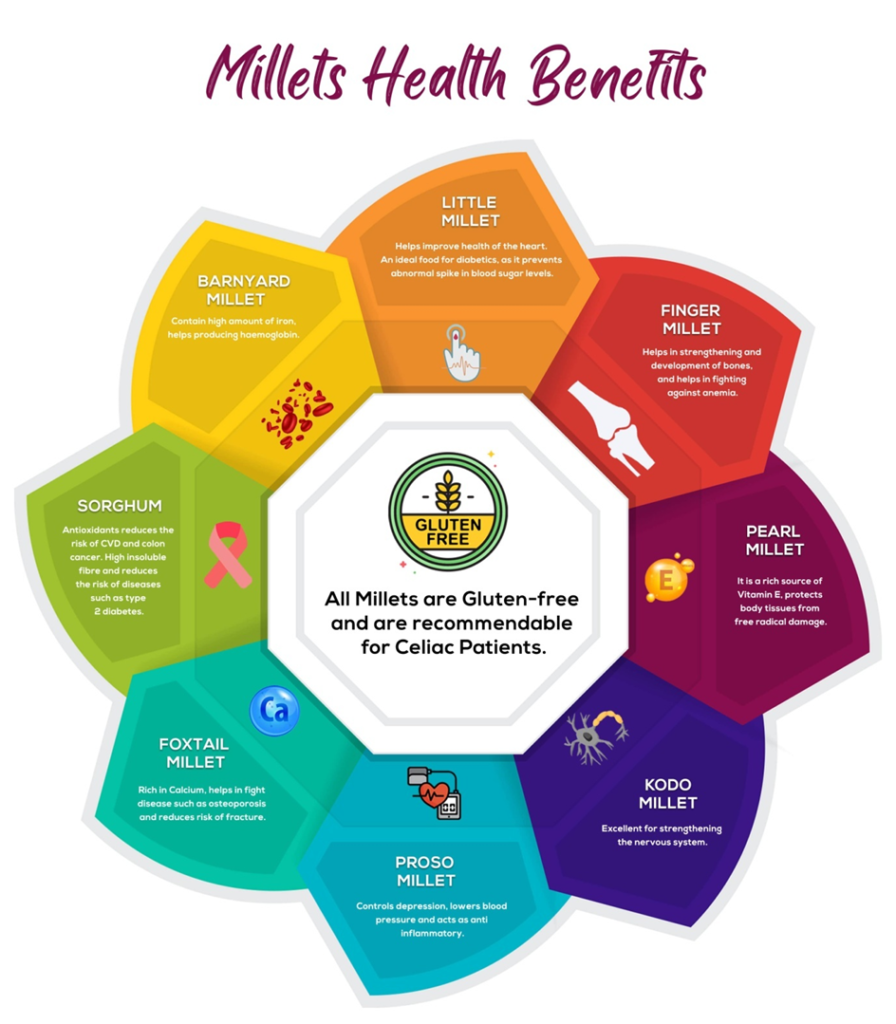Millets are among the first plants to be domesticated and are considered “nutri-cereals” due to their high nutritional content.
Millet’s health benefits are widely known:
֍Millets are a great grain for diabetes. They have a low glycaemic index, which can help prevent or manage diabetes.

֍Millets are the powerhouse of nutrition, they contain various essential nutrients such as iron, manganese, calcium etc. and work great in preventing and treating various nutritional deficiencies.
֍Compared to other cereals they have superior micronutrient profile and bioactive flavonoids.
֍Moreover, being gluten-free, they are great for those who have gluten sensitivity. They can be consumed by celiac disease patients.
֍They are rich in vitamins and minerals, including iron and calcium; are high in protein, antioxidants and resistant starch.
֍As whole grains, millets provide different amounts of fibre. Dietary fibre has a role in regulating bowel function, blood sugar and lipids, and satiation and help in the weight loss process.
֍Millets are rich in minerals. While the iron content of barnyard millet is 15.2 mg, that of rice is 0.7 mg. Calcium content of foxtail millet is 31 mg, that of rice 10 mg. While the percentage of nutrients varies with each variety of millet, in general they are richer in calcium, iron, beta-carotene etc. than rice and wheat.

֍Millet has a beneficial effect on the management and prevention of hyperlipidemia and risk of Cardio Vascular Diseases.
֍Millets are found to be helpful with the reduction of weight, BMI, and high blood pressure.
֍In India, millet is generally consumed with legumes, which creates mutual supplementation of protein, increases the amino acid content, and enhances the overall digestibility of protein.
֍Millet based value-added products in ready to cook, ready to eat category are easily accessible and convenient to the urban population.
In conclusion, millets are a wholesome package in terms of nutritional and environmental benefits. Though the United Nations and the Indian government are taking various measures to raise millet awareness, millets still have a long way to go on a global level. If more and more people come forward and help in spreading the millet benefits, then it could be a win-win situation for our farmers and the environment both.
